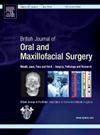An evaluation of TikTok videos as a source of information for orthognathic surgery
IF 1.9
4区 医学
Q3 DENTISTRY, ORAL SURGERY & MEDICINE
British Journal of Oral & Maxillofacial Surgery
Pub Date : 2025-06-01
DOI:10.1016/j.bjoms.2025.02.014
引用次数: 0
Abstract
As social media platforms like TikTok become increasingly popular, patients are turning to them for information about surgical procedures, including orthognathic surgery. This study aimed to evaluate the content quality, reliability, and educational value of videos related to orthognathic surgery on TikTok. A total of 84 videos were analysed using two standardised assessment scales: the modified 5-point DISCERN scale and the Global Quality Score (GQS). These videos were sourced through search terms #JawSurgery and #OrthognathicSurgery, and the data were extracted using a web-scraping tool. The analysis revealed that TikTok videos on orthognathic surgery had a mean DISCERN score of 1.6/5 and a mean GQS of 2.2/5, indicating generally poor quality. Most videos were uploaded by patients (46/84), while 33/84 were by healthcare professionals, particularly maxillofacial surgeons and orthodontists. Despite the high viewership (246 million views across all videos), many videos were limited in content, with 52/84 not containing any information on the procedure, and only 4/84 mentioning risks beyond swelling and bruising. Notably, 82 of the 84 videos had patients interacting in the comments, seeking advice or sharing experiences. While TikTok serves as an important information platform, it also highlights a significant gap in reliable, comprehensive content. Healthcare professionals should direct patients to high quality sources of information that have been approved by them to mitigate the risks of misinformation and anxiety for prospective patients.
对TikTok视频作为正颌手术信息来源的评估。
随着TikTok这样的社交媒体平台越来越受欢迎,患者开始向它们寻求有关外科手术的信息,包括正颌手术。本研究旨在评估TikTok上与正颌手术相关的视频的内容质量、可靠性和教育价值。总共84个视频使用两种标准化评估量表进行分析:修改后的5分制DISCERN量表和全球质量评分(GQS)。这些视频的来源是通过搜索词#JawSurgery和#OrthognathicSurgery,数据是通过网络抓取工具提取的。分析显示,TikTok关于正颌手术的视频的平均DISCERN得分为1.6/5,平均GQS为2.2/5,表明质量普遍较差。大多数视频是由患者上传的(46/84),而33/84是由医疗保健专业人员上传的,特别是颌面外科医生和正畸医生。尽管观看量很高(所有视频的观看量为2.46亿),但许多视频的内容有限,52/84的视频没有包含任何关于手术过程的信息,只有4/84的视频提到了肿胀和瘀伤以外的风险。值得注意的是,84个视频中有82个让患者在评论中互动,寻求建议或分享经验。虽然TikTok是一个重要的信息平台,但它也凸显了在可靠、全面的内容方面的巨大差距。医疗保健专业人员应指导患者使用经其批准的高质量信息源,以减轻潜在患者的错误信息和焦虑风险。
本文章由计算机程序翻译,如有差异,请以英文原文为准。
求助全文
约1分钟内获得全文
求助全文
来源期刊
CiteScore
3.60
自引率
16.70%
发文量
256
审稿时长
6 months
期刊介绍:
Journal of the British Association of Oral and Maxillofacial Surgeons:
• Leading articles on all aspects of surgery in the oro-facial and head and neck region
• One of the largest circulations of any international journal in this field
• Dedicated to enhancing surgical expertise.

 求助内容:
求助内容: 应助结果提醒方式:
应助结果提醒方式:


